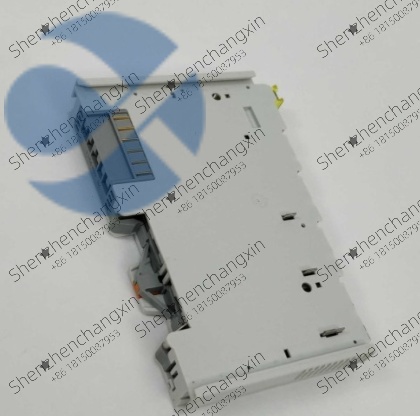
Beckhoff KL1712:A High-Precision Analog Data Acquisition Core for EtherCAT Architecture
In the signal acquisition chain of industrial automation,modular I/O modules serve as the”sensing antennae”connecting field sensors and control systems.As a leader in EtherCAT technology,Beckhoff’s KL1712 analog input module,with its 24-bit high-resolution data acquisition,microsecond-level synchronous response,and deep integration with the TwinCAT system,has become an ideal data acquisition component for semiconductor equipment auxiliary systems,new energy equipment,high-end machine tools,and other applications.Whether monitoring environmental parameters in semiconductor cleanrooms or capturing pressure signals on lithium battery production lines,this module provides reliable field data support for control systems through precise analog conversion and high-speed data transmission,earning it the title of”precision converter”for industrial-grade signal acquisition.
1.Hardware Design and Core Parameters:The Performance Cornerstone of Modular Acquisition
1.1 Compact Modular Hardware Architecture
The Beckhoff KL1712 utilizes a standard K-bus module design,measuring only 12mm×100mm×60mm.It seamlessly fits into the Beckhoff KL series terminal rail(compliant with the EN 60715 DIN 35 standard).It connects to bus couplers(such as the KL3001)via a rear bus bar,enabling high-speed connections.The inter-module spacing is only 2.5mm,significantly saving space in the control cabinet.The module housing is made of flame-retardant ABS(compliant with UL94 V-0)and has an IP20 protection rating,making it suitable for installation in industrial control cabinets.A built-in dust shield reduces dust intrusion on the terminal interfaces.The core hardware features a highly integrated design:the signal acquisition unit utilizes the ADI AD7793 24-bitΣ-ΔADC chip,supporting low-noise,high-resolution analog conversion.The signal conditioning circuit integrates a high-precision filter module(with a software-configurable cutoff frequency ranging from 1Hz to 1kHz),effectively filtering out electromagnetic interference signals from industrial sites.The power module utilizes an isolated design(isolation voltage 500V DC)to prevent main circuit voltage fluctuations from affecting acquisition accuracy.The module is equipped with four independent acquisition channels,each supporting software-programmable signal type adaptation,allowing compatibility with different sensor output signals without hardware replacement,offering far greater flexibility than fixed-range acquisition modules.1.2 Key Electrical and Acquisition Parameters
Parameter Category
Specifications
Product Model
Beckhoff KL1712
Manufacturer
Beckhoff Automation GmbH&Co.KG
Product Type
Industrial-Grade Modular Analog Input Module(K-bus Series)
Compatible System
Beckhoff KL series terminal module system,requires a bus coupler(such as the KL3001 or KL3152)
Core Acquisition Chip
ADI AD7793(24-bitΣ-ΔADC)
Number of Acquisition Channels
4 single-ended/2 differential analog inputs
Supported Signal Types
Voltage Signals:±10V,±5V,±2.5V,0-10V,0-5V;Current Signals:0-20mA,4-20mA(requires an external 250Ωresistor);Temperature Signals:PT100,PT1000(expandable via an RTD module)
Acquisition Accuracy
24-bit effective resolution,total error±0.01%Full scale(typical),nonlinearity error±0.005%full scale
Sampling rate:Up to 100Hz per channel;rate scalable(10Hz to 100Hz)for multi-channel parallel acquisition
Input impedance:Voltage signal:≥10MΩ;Current signal:≤5Ω
Isolation:Channel-to-channel isolation:None;Module-to-bus isolation:500V DC(compliant with EN 61131-2)
Communication interface:K-bus(EtherCAT/Profinet/Modbus via bus coupler)
Power supply:24V DC(powered from bus coupler via K-bus),current consumption≤80mA
Operating environment requirements:Temperature:0°C to+55°C,Humidity:10%to 90%RH(non-condensing),IP rating:IP20
Interference immunity:Common-mode rejection ratio(CMRR)≥100dB(50Hz),differential-mode rejection ratio(DMRR)≥80dB,compliant with EN 61000-6-2(Immunity for Industrial Environments)
Safety Certifications
CE,UL,cUL,ATEX(Explosion-Proof Version Available)
Software Compatibility
Supports TwinCAT 3/2 automation software,providing standard function block(FB)calls
2.Core Function:Accurate Industrial-Grade Signal Acquisition
2.1 Adaptive Acquisition of Multiple Signal Types
The KL1712’s core capabilities lie in its dual features of”compatibility with multiple signal types”and”high-precision acquisition.”The four acquisition channels can be flexibly adapted to mainstream industrial sensor signals through software configuration.For example,in semiconductor equipment cooling water system monitoring,the module collects 4-20mA signals(corresponding to a pressure range of 0-10bar)output by pressure sensors.The 24-bit ADC converts the current signal into a digital value,capturing subtle changes of 0.01mA,which translates to a pressure deviation of only 0.005bar.For temperature monitoring in lithium battery electrode rolling mills,an external RTD module is added to collect PT100 sensor signals(range-50°C to+200°C)with an accuracy of±0.1°C,meeting the requirements for roller temperature uniformity control.The module’s built-in signal filtering function dynamically adjusts based on on-site interference conditions.When high-frequency electromagnetic interference(such as 10kHz interference from a frequency converter)is present in industrial environments,technicians can use TwinCAT software to set the filter cutoff frequency to 10Hz,filtering out interfering signals while ensuring the integrity of useful signals.In cleanroom environments with less interference,the cutoff frequency can be increased to 1kHz,ensuring the sampling rate meets real-time monitoring requirements.This”software-adjustable filtering”design enables the module to adapt to the interference characteristics of different industrial scenarios without the need for additional external filters.
2.2 High-SpeedSynchronization with EtherCAT Systems
As a key component of the Beckhoff EtherCAT control system,the KL1712 requires connection to the EtherCAT network via a bus coupler(such as the EtherCAT-compatible KL3152)to enable high-speed data exchange with the master controller.In EtherCAT’s Process Data Object(PDO)communication mode,the module’s data collection update cycle can be as low as 1ms.It also supports distributed clock synchronization.Using EtherCAT synchronization signals,multiple KL1712 modules(e.g.,distributed at different points in a workshop)can achieve±1ns synchronization of data collection times,ensuring time consistency across multiple locations.
For example,in a semiconductor wafer conveyor system,three KL1712 modules collect the conveyor track’s tension signal(0-5V),the drive motor’s current signal(0-20mA),and the track’s temperature signal(PT100).After synchronization via EtherCAT,the acquisition time deviation of these three signals is≤0.5ns.The main controller can determine the conveyor system’s operating status based on precisely synchronized data,avoiding misjudgments due to signal timing differences.In addition,the module supports”event-triggered acquisition”:when the acquired signal exceeds a preset threshold(for example,if the pressure suddenly exceeds 8 bar),an interrupt signal is immediately triggered,and the main controller responds and initiates protective actions within 100μs,a 10-fold increase in response speed compared to traditional polling acquisition.
2.3 Designed for Convenient Diagnostics and Maintenance
The KL1712 features comprehensive self-diagnostic functionality,providing real-time monitoring of the module’s hardware status and acquired signal quality.When a channel experiences a disconnection,the module sends a fault code(such as”0x03-Channel 2 Disconnect”)to the main controller via the K-bus.Simultaneously,the LED indicator on the front of the module(one per channel)turns red.When the acquired signal exceeds the range(for example,if the input voltage exceeds 12V),the indicator flashes,indicating”Signal Out of Limit,”and a log entry is generated in the TwinCAT software.This dual diagnostic mechanism of”hardware indicator+software log”reduces fault location time from the traditional two hours to just 10 minutes.The module supports”online calibration”:Without removing the module,technicians can initiate a calibration command through TwinCAT software,and the module automatically calibrates each channel to zero and full scale.The calibration process takes only 30 seconds,and the calibration data is stored in the module’s built-in non-volatile memory,ensuring it is not lost even after a power outage.In contrast,traditional analog modules require periodic disassembly and calibration using dedicated calibration equipment,each taking at least an hour.The KL1712’s online calibration feature significantly improves operational efficiency.
3.Typical Application Scenario:Cross-Industry Signal Acquisition Solution
3.1 Semiconductor Equipment Auxiliary System Monitoring
In semiconductor manufacturing,the core process control of AMAT AKT CVD equipment is handled by a dedicated chamber control board.However,the KL1712 is widely used for status monitoring of the equipment’s auxiliary systems.For example,in the CVD equipment’s cooling water circulation system,two KL1712 modules(with a total of eight channels)collect pressure data(4-20 mA)from four cooling circuits,the inlet and outlet temperatures(PT100)of two heat exchangers,and the operating current(0-5 V)of two water pumps.This data is connected to the EtherCAT network via a KL3152 bus coupler and transmitted to the TwinCAT controller.
When the cooling circuit pressure drops to 1 bar(corresponding to a 4 mA signal),the KL1712 transmits an abnormal signal within 1 ms to the controller,triggering an alarm and activating a backup water pump to prevent temperature runaway in the CVD chamber due to insufficient cooling.A semiconductor foundry reported that after adopting the KL1712,the accuracy of auxiliary system fault warnings increased from 85%to 98%,and unplanned equipment downtime was reduced by 40%.
3.2 New Energy Lithium Battery Production Line Control
In the lithium battery electrode coating process,the KL1712 module collects key process parameters:It uses four channels to collect information about the coating pressure(0-10V),coating roller temperature(PT1000),slurry flow(4-20mA),and substrate tension(0-5V).This data is transmitted in real time to the TwinCAT controller,enabling closed-loop control with the servo drive system.24-bit data acquisition accuracy ensures coating pressure deviation within±0.05 bar and temperature fluctuation within±0.1°C,improving electrode thickness uniformity from±5μm to±2μm and battery capacity consistency by 12%.After implementing this technology at a lithium battery manufacturer,the coating process defect rate dropped from 3.8%to 1.1%,reducing electrode scrap by approximately 3 tons per month and generating direct cost savings exceeding 500,000 yuan.Furthermore,the KL1712’s anti-interference performance effectively mitigates electromagnetic interference generated by high-frequency motors within the coating workshop,improving the signal-to-noise ratio of the collected signal from 40dB with traditional modules to 60dB.
3.3 High-End Machine Tool Processing Status Monitoring
In a five-axis machining center,the KL1712 module is used for tool and workpiece status monitoring:three channels collect spindle vibration acceleration(0-10V),cutting force(4-20mA),and tool temperature(PT100),with a sampling rate set to 50Hz.The collected data is synchronized with the machine tool’s CNC system via EtherCAT.If the cutting force suddenly exceeds a preset threshold(e.g.,from 500N to 800N),the system identifies tool wear,immediately reduces the cutting speed,and issues an alarm to prevent workpiece scrap.After implementing the KL1712,the accidental damage rate of machine tool tools dropped from 2.5 times per month to 0.3 times per month,and the workpiece processing qualification rate increased from 96%to 99.2%.This reduced the annual maintenance costs of a precision machinery factory by approximately 800,000 yuan.
4.Comparison with the AMAT 0100-71121 Rev.02:Positioning Differences and Scenario Adaptation
4.1 Core Positioning and Functional Boundaries
The essential difference between the two lies in the distinction between”dedicated control”and”general-purpose acquisition.”The AMAT 0100-71121 Rev.02 is a dedicated control board for semiconductor CVD equipment,integrating the full chain of”acquisition-calculation-control-safety”functions.Its core goal is to achieve closed-loop control of nanometer-level process parameters,which directly determines thin film deposition quality and device yield.The Beckhoff KL1712,on the other hand,is a general-purpose industrial-grade analog acquisition module that only performs”signal acquisition-data transmission”functions.It lacks autonomous calculation and control capabilities and relies on an external controller for closed-loop control.Its core goal is to provide accurate field data to the control system.In terms of functional completeness,the AMAT board integrates a DSP processor,DAC output channels,and a safety interlock module,allowing it to directly drive actuators such as heating tables and pressure valves.The KL1712,on the other hand,only includes ADC acquisition channels and requires a TwinCAT controller and analog output modules(such as the KL2712)to achieve control functions.This provides a higher degree of functional modularity but a lower level of integration.4.2 Performance and Scenario Comparison
Comparison Dimensions
Beckhoff KL1712
AMAT 0100-71121 Rev.02
Accuracy
24-bit acquisition,±0.01%full-scale error
24-bit acquisition+16-bit output,±0.001%acquisition error
Response Speed
Data update cycle≥1ms,no control execution capability
Control response≤10ms,data synchronization≤1ms
Environmental Compatibility
Industrial control cabinet environment(0°C-55°C,IP20)
Semiconductor cleanroom(20°C-25°C,Class 10)
Corrosion Resistance
No specialized corrosion resistance design
Gold plating,resistant to trace corrosive gases
Safety Features
Basic fault diagnosis,no process safety interlock
Compliant with SEMI S2/S8,with emergency shutdown interlock
Applicable Scenarios
Equipment auxiliary systems,general industrial control
Semiconductor core processes(CVD chamber control)
System Dependencies
Requires Beckhoff EtherCAT/TwinCAT system
Native compatibility AMAT AKT CVD Equipment
In semiconductor manufacturing,the two form a complementary”core+auxiliary”relationship:the AMAT board leads the process control of the CVD chamber,while the KL1712 is responsible for cooling.
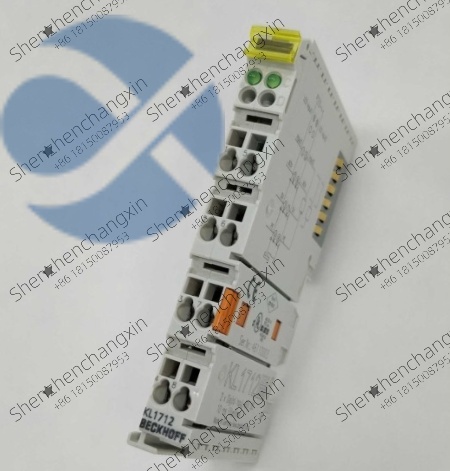
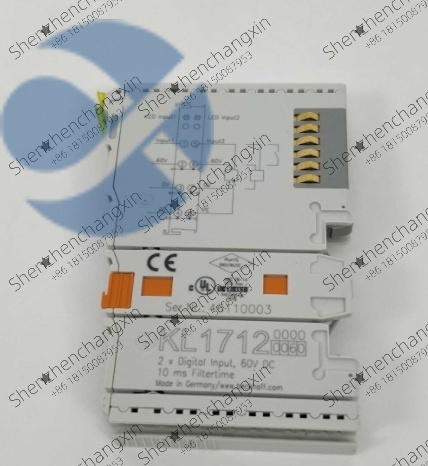


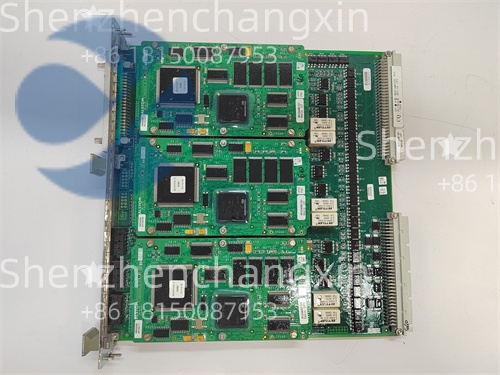
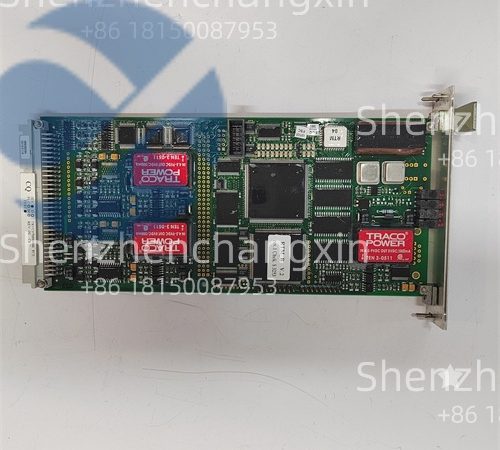
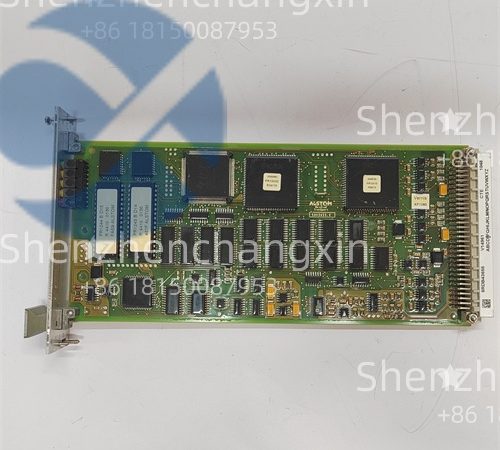
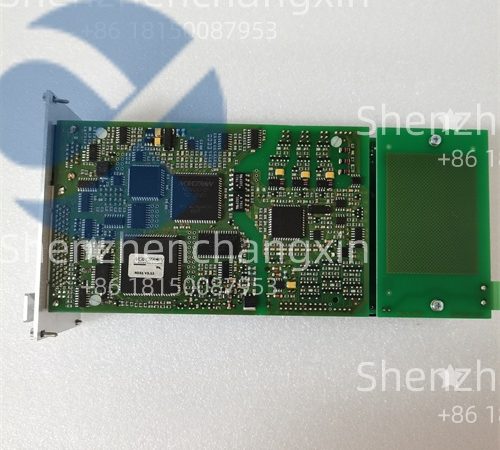
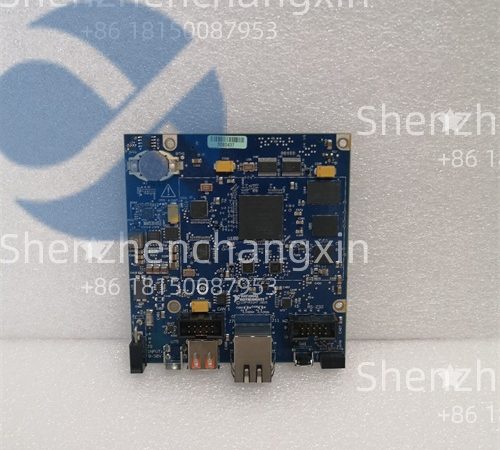
Leave a comment
Your email address will not be published. Required fields are marked *